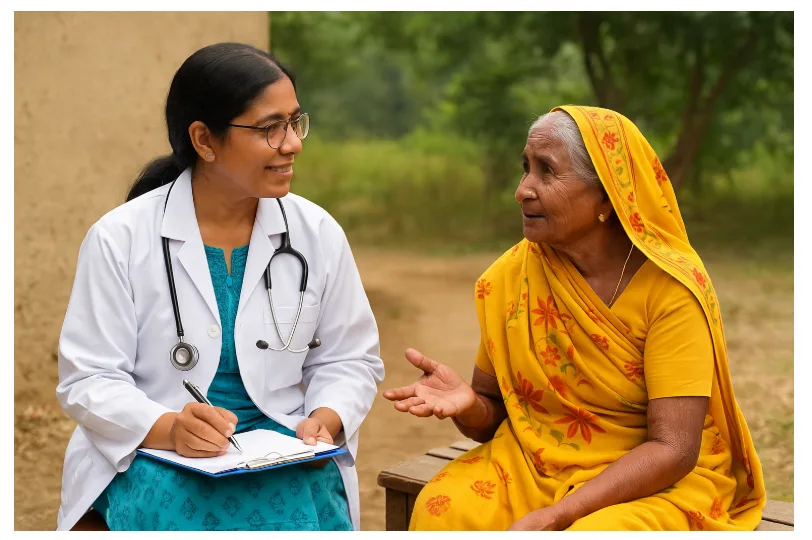Traditional Medicine’s Role in Closing Global Healthcare Gaps: The Ayurvedic Lesson
Closing the Health Divide: Traditional Medicine’s Insight
Many people in Asia, Africa, and Latin America struggle to access healthcare. The issue isn’t about waiting for referrals; it’s about how far they must travel. Can they walk to a clinic, a doctor, or even find basic medicine nearby? These communities often rely on local knowledge and proven customs to manage health, not big hospital networks. Ayurveda, India’s old medical practice, stands out as a prime example. Its real-world role in filling the big gaps modern healthcare leaves is now getting the worldwide recognition it needs.
The globe faces rising healthcare costs, a surge in chronic illnesses, and glaring health disparities. This leads policymakers to ask a key question: Can old-school healing methods work with modern medicine? Can they broaden care, reduce system strain, and strengthen communities? Ayurveda offers a compelling example that shows the answer is yes.
A System Made for Scarcity
Ayurveda came about thousands of years ago well before X-rays, complex tests, and specialist hubs existed. It’s built on basic principles: watching, spotting health trends, changing lifestyles, and using nearby remedies.
This background makes the system ideal for areas still facing these same challenges: tight budgets, poor infrastructure, and not enough trained personnel.
Low-Tech Approach
Rather than depending on costly technology, Ayurveda centers on everyday things: diet, surroundings, daily practices, and seasonal patterns. These methods are cheap and don’t need a hospital to use.
Nearby Help
In many of India’s country areas, certified Ayurvedic doctors are the first stop for treatment because Western-style doctors are hard to find. This trend shows up in many poor regions worldwide where most people see traditional healers first.
In places where it’s hard to get care, a system that aims to prevent illness and catch problems early isn’t just a nice idea- it’s very useful, and sometimes even a necessity.
Locally Available Remedies
The remedies themselves are also very often locally sourced. Many of the plants and herbs used in these treatments grow right in the same climate where the patients do. This can be a huge advantage when infrastructure fails. When pharmaceutical supply chains break down, or access to care is delayed, communities with this knowledge can still manage basic health needs with what is available literally right outside their door.
This makes traditional systems a practical, local bridge in places where modern healthcare is missing or severely stressed.
A Partnership, Not a Replacement
It is important to underline that Ayurveda is not supposed to substitute for contemporary medicine. In cases of heavy trauma, advanced states of diseases, and emergency conditions, hospitals and their specialized technology are absolutely irreplaceable.
However, where Ayurveda excels is in the vast area of everyday wellness and management of chronic conditions. Most common ailments respond well to changes in diet, habits, stress management, and rest. When traditional systems effectively handle this immense layer of primary and preventative care, that leaves the hospitals and specialist clinics free to focus on serious, complex cases that they are uniquely equipped for. A good Ayurvedic practitioner knows when the person needs dietary changes and herbal support, versus, medical help.
This shared approach is working in many countries currently. Traditional practitioners handle prevention and first-line support, and biomedical services focus on the complex. The result is a more balanced system that reduces overcrowding and improves early access for everyone.
Workforce and Policy Shifts
Regarding global health, one of the greatest challenges today is the total lack of enough trained medical personnel. According to WHO, a shortage of millions of health workers is predicted, with the highest impact in the very areas that need them most.
Traditional practitioners, already trusted members within their respective communities, represent a ready-made workforce. They can be trained, monitored, and integrated into national public health strategies, immediately boosting local access and easing pressure on formal hospitals.
Further, investment in traditional care provides economic benefits, creates employment, and reduces reliance of communities upon expensive, external systems. It preserves centuries of cultural knowledge that holds real practical value.
The Global Health Community Is Taking Notice
- The WHO has just opened its Global Centre for Traditional Medicine in India.
- Several African nations are developing regulations to certify and monitor traditional healers.
- Brazil has begun integrating traditional practices into its public health network.
These moves signal that there is a growing awareness globally that health equity cannot be achieved by building hospitals alone. The approach needs to shift toward systems that meet people where they are.
Ayurveda has a deep lesson for us: healthcare truly begins long before a person ever sets foot in a clinic. It starts in our homes, in our habits, our food, and our local environments. If we responsibly integrate those cultural roots with scientific standards, we can build a future in which traditional medicine and modern medicine work hand in hand to ensure that more communities get the care they need without waiting for systems that simply cannot reach them fast enough.

